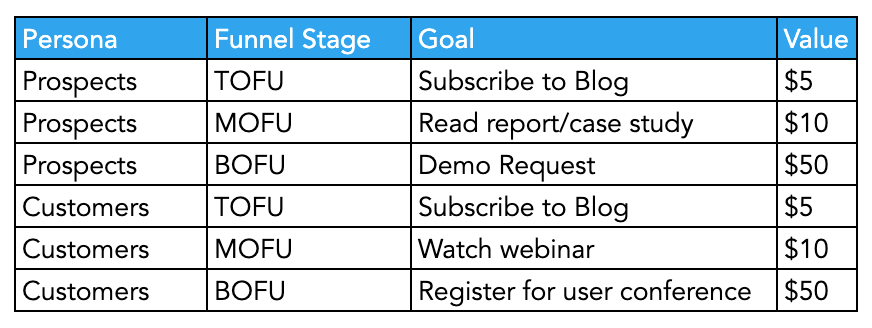Understanding What Data Is Google Analytics Goals Unable to Track
Discover the Limitations of Google Analytics Goals: Unveiling the Information Kind That Remain Untrackable
As organizations increasingly depend on data-driven decision-making, comprehending the restrictions of devices like Google Analytics becomes critical. While Google Analytics Goals deal beneficial understandings right into customer interactions, there exist data types that thwart tracking, positioning difficulties to a thorough understanding of user behavior. These untrackable data types question concerning the accuracy and efficiency of the analytics data that companies greatly rely upon for their digital approaches. Interested to uncover the surprise dead spots in your information analysis procedure?
Incomplete Customer Journey Tracking
Incomplete individual trip tracking within Google Analytics can prevent the ability to precisely analyze user behavior. When the customer trip is not completely tracked, there are voids in the data that stop a detailed understanding of just how customers communicate with a web site. This absence of insight can cause missed chances for optimization and enhancements to the individual experience.
One common concern with insufficient user journey tracking is the failure to see the full path that individuals take in the past finishing an objective or leaving the site. Without this details, it is challenging to recognize where individuals might be running into challenges or friction points that prevent them from transforming. In addition, insufficient tracking can cover the influence of specific advertising and marketing efforts or web site changes on individual actions.
To address this restriction, it is vital to establish proper tracking devices within Google Analytics to catch the whole user journey. This might entail establishing occasion tracking, objective funnels, or using devices like Google Tag Supervisor to make sure that no vital communications go unrecorded. By gaining a thorough sight of the user journey, web site proprietors can make more informed decisions to improve individual interaction and drive conversions.
Attribution Difficulties
Navigating via attribution obstacles in Google Analytics calls for an extensive understanding of exactly how different touchpoints add to the overall conversion process. Attribution obstacles develop from the intricacy of contemporary client trips, where customers interact with multiple channels before converting. Google Analytics gives different acknowledgment versions like initial touch, last touch, and direct, each providing a various perspective on exactly how debt is assigned to touchpoints along the conversion course. These models might not always precisely reflect the true effect of each touchpoint on the conversion.
One common acknowledgment obstacle is the difficulty in associating conversions to the proper source, specifically in instances where individuals communicate with multiple networks prior to converting. In addition, cross-device monitoring positions an additional acknowledgment challenge, as customers often switch between tools throughout their trip, making it testing to track their communications effortlessly.
Offline Conversions
Offered the difficulties linked with associating conversions properly in online networks, the measurement of offline conversions offers a substantial chance for marketing experts seeking an extra extensive understanding of their consumers' journey. Offline conversions refer to activities that consumers take in the real world, such as making acquisitions in brick-and-mortar stores or over the phone, going to events, or engaging with published products - what data is google analytics goals unable to track. These conversions are crucial for businesses useful link that run both online and offline, as they offer useful insights right into the performance of marketing projects across different touchpoints
Tracking offline conversions traditionally postured a considerable difficulty for marketing professionals, as it was testing to connect these actions back to details on the internet interactions properly. With advancements in technology, such as the integration of CRM systems, one-of-a-kind identifiers, and discount coupon codes, services can now bridge the gap between online and offline information to obtain an extra holistic sight of consumer actions. By effectively gauging offline conversions, marketing professionals can optimize their approaches, designate sources much more effectively, and eventually boost the total customer experience.
Cross-Device Monitoring
Cross-device tracking plays an important function in comprehending the interconnected nature of consumers' electronic interactions across multiple tools. In today's omnichannel globe, where individuals perfectly switch over between desktops, tablets, and smartphones, tracking their actions throughout these devices is crucial for marketers to acquire an extensive view of their consumer trip.

Furthermore, personal privacy worries and guidelines such as GDPR and CCPA have additionally difficult cross-device monitoring. With individuals requiring more control over their data and enhanced constraints on tracking technologies, online marketers have to locate privacy-compliant and innovative methods to attach user interactions across tools.
Dynamic Material Interaction
Understanding individual interaction with vibrant web content is essential in enhancing electronic advertising and marketing strategies for enhanced audience interaction. Dynamic content refers to website visit this website components that change based upon customer behavior, preferences, or various other variables, providing a customized experience. Tracking individual interactions with vibrant material poses challenges for conventional analytics devices like Google Analytics.
While Google Analytics can track standard communications like clicks and web page sights, it may battle to capture more nuanced interactions within vibrant web content. what data is google analytics goals unable to track. Metrics such as time spent on particular dynamic elements, hover activities, or communications within pop-ups are usually not easily quantifiable making use of conventional monitoring techniques. This constraint prevents marketing experts' capacity to totally realize exactly how individuals are involving with dynamic content and tailor their methods accordingly

Final Thought
To conclude, Google Analytics goals have limitations in tracking incomplete customer trips, connecting conversions accurately, catching offline conversions, tracking cross-device communications, and gauging vibrant web content involvement. These constraints highlight the significance of checking out additional monitoring techniques and devices to obtain an extra extensive understanding of individual habits and conversions past what Google Analytics can supply.
While Google Analytics Goals deal important insights into individual communications, there exist data types that elude tracking, positioning obstacles to a detailed understanding of user behavior.Incomplete user journey monitoring within Google Analytics can impede the capability to properly examine customer habits. When the customer journey is not totally tracked, there are voids in the data that stop a detailed understanding of just how customers communicate with a website.One usual issue with incomplete customer trip monitoring is the inability to see the complete course that users take in the past finishing an objective or leaving the site. By getting a thorough sight of the user journey, site proprietors can make more educated decisions to boost user engagement and drive conversions.